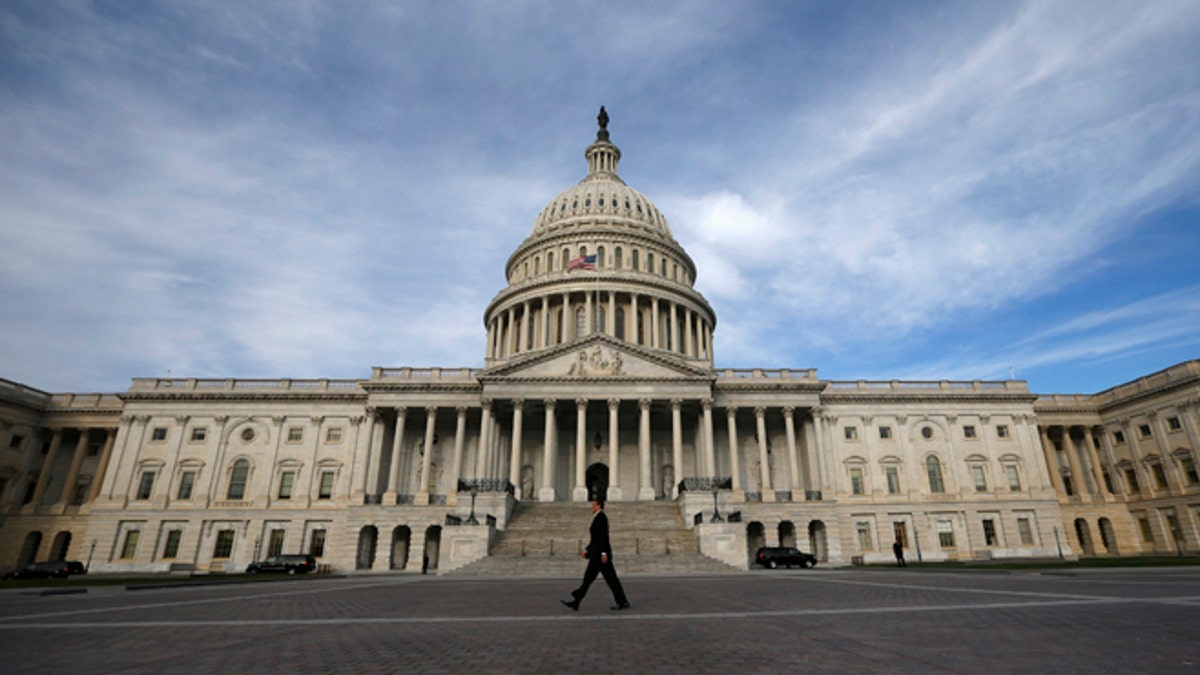
A lone worker passes by the U.S. Capitol building in Washington, October 8, 2013. (Reuters)
Remember the last government shutdown? Experienced congressional leaders remember it well, and even the toughest talking Democrats and Republicans know that sooner or later they will have to compromise to end this one.
Unfortunately, the classic partisan divide is only part of today’s congressional dysfunction: More than illustrating a classic Democrat-Republican split, the current shutdown highlights differences in how generations of representatives understand what it takes to legislate, what it means to make good on campaign promises, and how to move forward artfully when compromise is the only way to go.
On one side of the divide we have battle-tested representatives, members who have been there and done that - and who know that legislation requires negotiation. They know that opening their shuttered government eventually will require both sides to drop the tough talk and put their partisan ideologies aside for the greater common good.
[pullquote]
On the other side of this fault line we see a very different group of freshly elected representatives who’ve painted themselves into a corner with their hardline, no-compromise campaign promises.
Many of these fresher-faced representatives are newer to the reality of bargaining, and are far less inclined to concede on the issue at the heart of this fight—the Affordable Care Act. Many of these newer members -- like Jim Jordan of Ohio -- ran campaigns and won elections by taking tough, no-compromise stances on ObamaCare.
Having pledged to defeat or defund or delay ObamaCare makes it easy for newer members to take a hard-line, no compromise position on the issue. After all, that is what they were elected to do.
[pullquote]
But now comes the tricky part: Now that they’re painted into a corner, how do they square the all-or-nothing stand they promised the voters with what is now required to end the shutdown: compromise?
This dilemma has newer members facing off against more experienced members of their own caucus. Before any cross-aisle negotiations can be fruitful, a fractured caucus needs to come together.
The older generation has been there before. They may not have made exactly the same pledges as their more recently elected colleagues, but they have their own promises and commitments to uphold.
What the old guard must do is help their colleagues figure out a way to maintain their stance as principled fighters for their constituents while at the same time agreeing to the deal that will bring the shutdown to an end.
With both sides so deeply dug in to their ideologies and campaign promises, it is unlikely that any side will concede all the ground.
But before this stalemate is resolved, all sides and factions are going to give up something that each said was impossible to give.
Then, they all will have to figure out how to claim victory for what they got in the deal -- or for what they didn’t give away.
Into the second week of the shutdown, it’s clear that no one is ready to budge on ObamaCare – at least not publicly.
One way to break the stalemate – and avoid the Oct. 17 default deadline -- may be to introduce other, less contentious issues that would give the other side a concession to make and allow each to walk away claiming a victory -- both practically and on principle.
Only the most ideologically driven members of congress will deny the inevitability of compromise and reasonable concession.
The question is, how many of them will face this reality before the Oct. 17 default deadline dawns?
If that deadline passes without such compromise, the economic calamity that follows will mute past campaign rhetoric.
